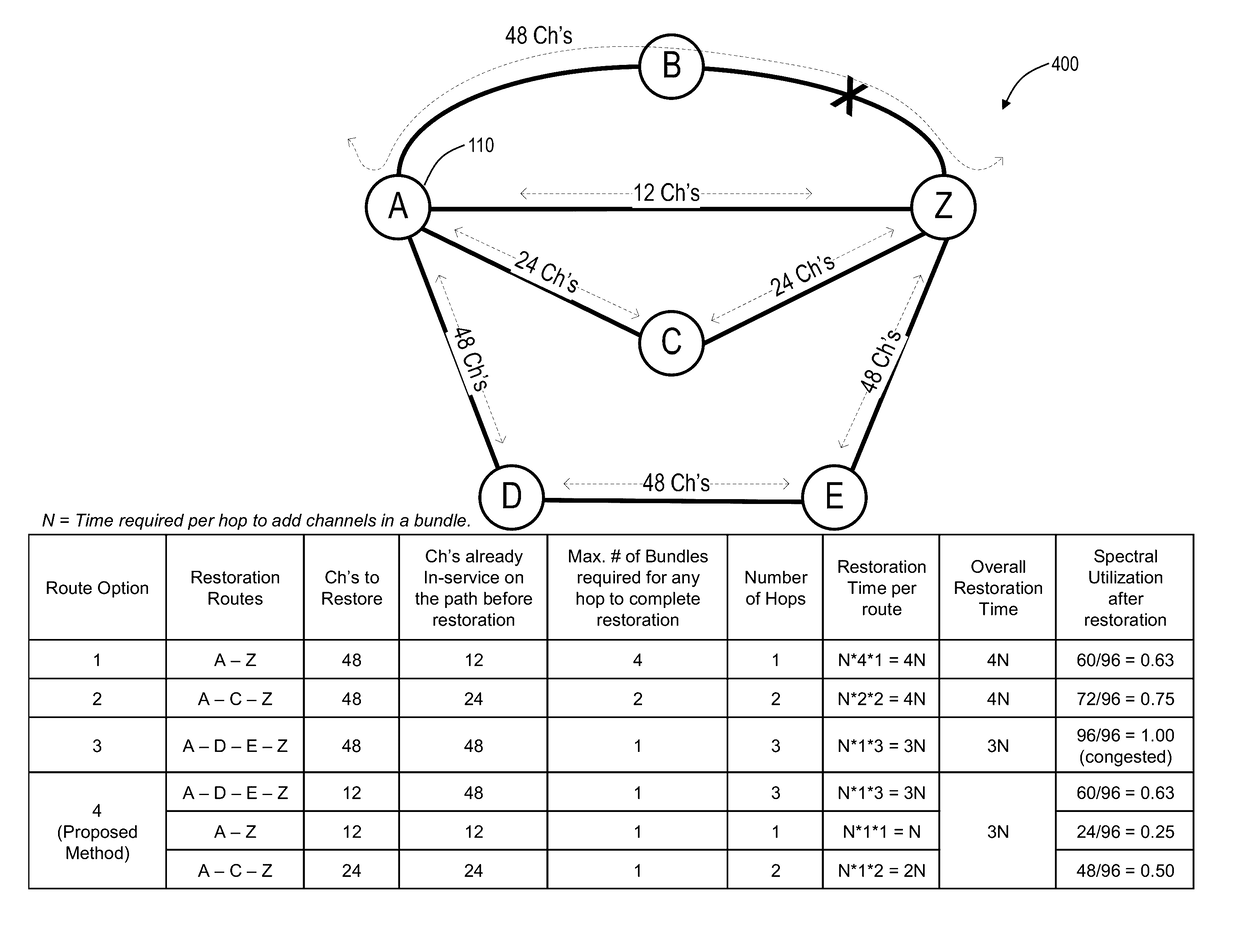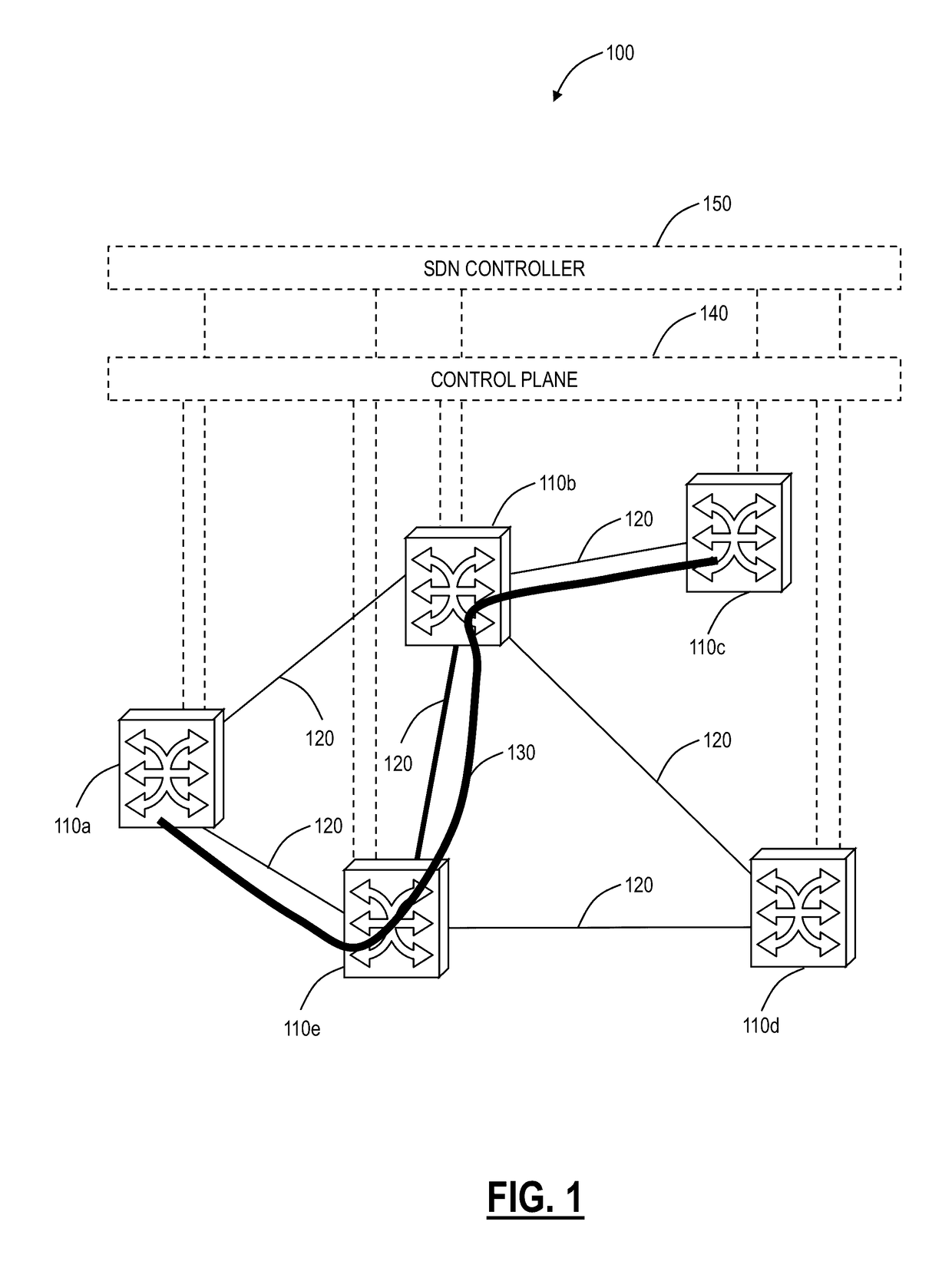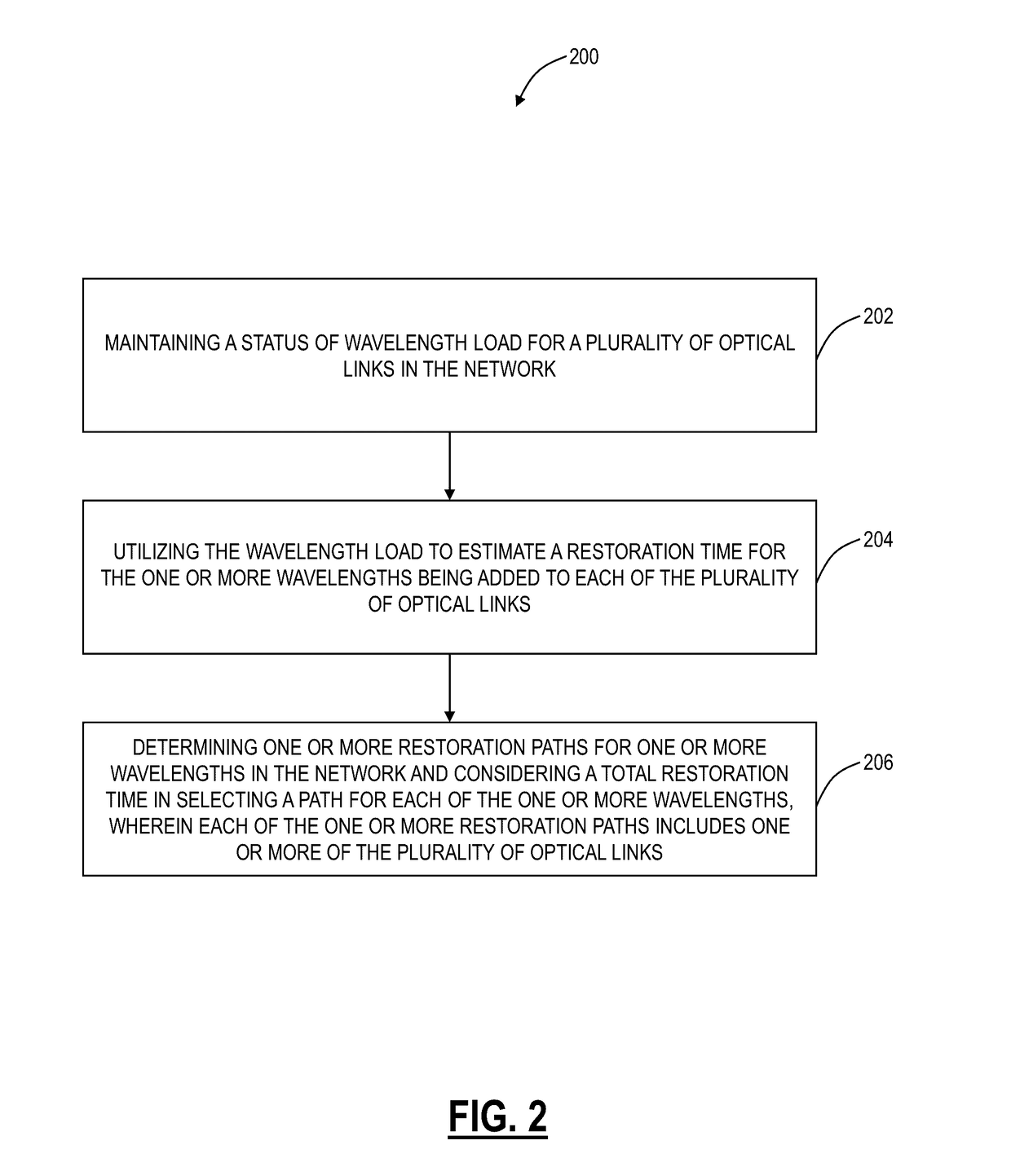Systems and methods improving optical restoration time in networks
- Summary
- Abstract
- Description
- Claims
- Application Information
AI Technical Summary
Benefits of technology
Problems solved by technology
Method used
Image
Examples
Embodiment Construction
[0014]In various exemplary embodiments, systems and methods are described for improving optical restoration time in networks. The systems and methods augment restoration or path computation techniques by understanding the impact of channel restoration in the presence of existing wavelengths. As such, the systems and methods include computing a network optimal restoration scheme for a given link failure such that all wavelengths are stored in the minimum amount of time. An exemplary objective of the systems and methods is to further take into consideration the number of existing channels on a given link such that the bundles of wavelengths being added to a given link is done in an optimal manner.
Exemplary Network
[0015]Referring to FIG. 1, in an exemplary embodiment, a network diagram illustrates an exemplary network 100 with five interconnected nodes 110a, 110b, 110c, 110d, 110e. The nodes 110 are interconnected through a plurality of links 120. The nodes 110 communicate with one ano...
PUM
 Login to View More
Login to View More Abstract
Description
Claims
Application Information
 Login to View More
Login to View More - R&D
- Intellectual Property
- Life Sciences
- Materials
- Tech Scout
- Unparalleled Data Quality
- Higher Quality Content
- 60% Fewer Hallucinations
Browse by: Latest US Patents, China's latest patents, Technical Efficacy Thesaurus, Application Domain, Technology Topic, Popular Technical Reports.
© 2025 PatSnap. All rights reserved.Legal|Privacy policy|Modern Slavery Act Transparency Statement|Sitemap|About US| Contact US: help@patsnap.com



